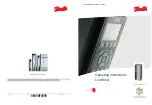
CFETF10xx-105
6
24-Hour Technical Support:
1-800-260-1312
-- International:
00-1-952-941-7600
Operation
-- Continued
Link Pass-Through
When the Link Pass-Through feature is activated (see page 2), the media
converter monitors both the fiber and copper RX (receive) ports for loss of signal.
In the event of a loss of an RX signal (1), the media converter will automatically
disable the TX (transmit) signal (2), thus, “passing through” the link loss (3). The
far-end device is automatically notified of the link loss (4), which prevents the
loss of valuable data unknowingly transmitted over an invalid link.
Full-Duplex Network
In a full-duplex network, maximum cable lengths are determined by
the type of
cables
that are used. See page 1 (front cover) for the cable specifications for the
different CFETF10xx-105 models.
The 512-Bit Rule
does not apply
in a full-duplex network.
Half-Duplex Network (512-Bit Rule)
In a half-duplex network, the maximum cable lengths are determined by the
round trip delay limitations of each Fast Ethernet™
collision domain
. (A
collision domain is the longest path between any two terminal devices, e.g. a
terminal
,
switch
, or
router
.)
The 512-Bit Rule determines the maximum length of cable permitted by
calculating the round-trip delay in
bit-times (BT)
of a particular collision
domain. If the result is less than or equal to 512 BT, the path is good.
For more information on the 512-Bit Rule, see the white paper titled “
Collision
Domains
” on the Transition Networks website at: www.transition.com.
4
1
Media
Converter A
Media
Converter B
Near-End
Device
Far-End
Device
original fault
on the copper link
media converter B
disables the copper link
media converter A
disables the fiber TX link
3
2
media converter B
loses the fiber RX link
-- Click the
“Transition Now”
link for a live Web chat.
7
Cable Specifications
Copper Cable
Category 5:
Gauge
24 to 22 AWG
Attenuation
22.0 dB /100m @ 100 MHz
Maximum Cable Distance
100 meters
• Straight-through (MDI) or crossover (MDI-X) twisted-pair cable may be used.
• Shielded (STP) or unshielded (UTP) twisted-pair cable may be used.
• Pins 1&2 and 3&6 are the two active pairs in an Ethernet™ network .
• Use only dedicated wire pairs for the active pins:
(e.g., blue/white & white/blue, orange/white & white/orange, etc.)
• Do not use flat or silver satin wire.
Fiber Cable
The physical characteristics must meet or exceed IEEE 802.3™ specifications.
Bit Error Rate:
<10-9
Single mode fiber (recommended):
9 µm
Multimode fiber (recommended):
62.5/125 µm
Multimode fiber (optional):
100/140, 85/140, 50/125 µm
Crossover Cable
1
2
3
6
Straight-Through Cable
Twisted Pair #1
Twisted Pair #1
Twisted Pair #2
Twisted Pair #2
1
2
3
6
1
2
3
6
1
2
3
6
Operation
-- Continued
SNMP
See the on-line documentation that comes with Transition Networks
FocalPoint™
software for applicable commands and usage.
Use SNMP at an attached terminal or at a remote location to monitor the media
converter by monitoring:
•
Media converter power
•
Copper link and fiber link status
•
Hardware switch settings
•
Fault condition
Also, use SNMP to enter network commands that:
•
Enable/disable full- / half-duplex
•
Enable/disable Link Pass-Through (LPT)
•
Power down the media converter

























